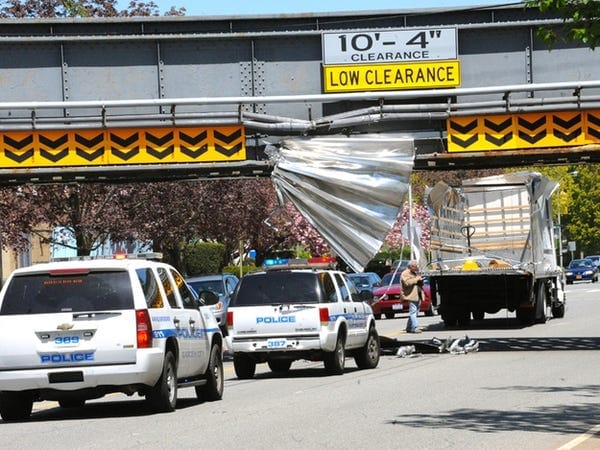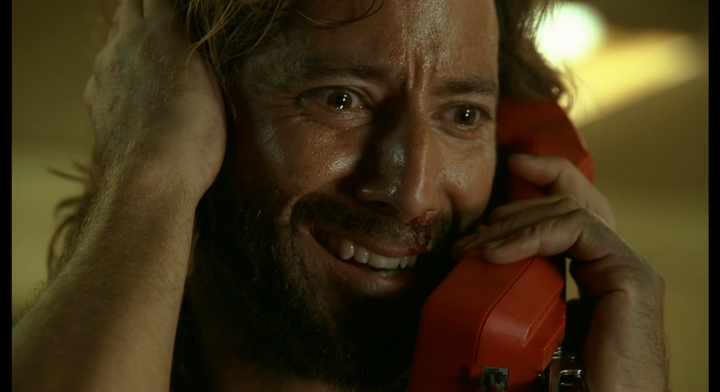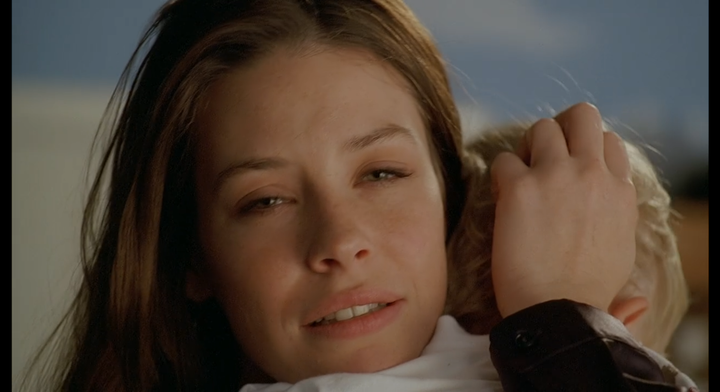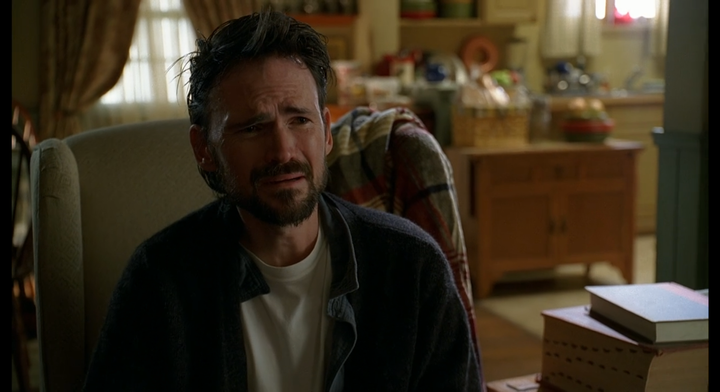Sabotage: Part 3 - The Big Question
The process of repair has been sabotaged, by “blameless” people, convinced of their own supremacy, whose primary goal is avoiding any cost of repair. Good to know … but what do we do now?

Note: this essay was originally published on Revue on August 8, 2022.
Intro | Part 1 | Part 2 | Part 3 | Part 4 |
Part 5 | Part 6 | Part 7 | Part 8 | Part 9 |
Part 10 | Part 11 | Part 12 | Part 13 | Part 14 |
Let me tell you a story.
Wikipedia informs me that Robert Moses was “an American public official who mainly worked in the New York metropolitan area,” whose “decisions favoring highways over public transit helped create the modern suburbs of Long Island.”
He was never elected, Wikipedia also informs me. An interesting footnote.
Moses built parkways which led, among other places, to Long Island beaches. He set the overpass bridges very low—too low, in fact, to accommodate public transport of the day, busses—which were the only option for many people in poorer neighborhoods and communities wishing to travel to the beach. The poorer neighborhoods and communities were largely people deemed “not white"—Black and Puerto Rican communities.
The result is that poorer people in the city—who tended to be people of color—did not go to the public beaches, and more affluent people who could afford cars—and who tended to be white—could go there, and did.
This result is not the official reason given for the low bridges, it should be noted. Wikipedia informs me that there are many complexities and rationales offered that are perfectly reasonable and perfectly benign. In fact, if you search Google for "Robert Moses and racism”, you may find as a first result a Washington Post fact-check that points out, among other proffered exonerations, that the practice of building bridges that wouldn’t accommodate busses was widespread nationally, and that Black and Puerto Rican people still don’t go to Jones Beach much even though car ownership is more widespread … and these strike me as strange proofs to offer that inherited structural racism isn’t at play. But in any case it appears there are those who claim a competing points of view complicating the narrative of Robert Moses and the structural racism of bridges. We could go read them, and educate ourselves about them, and maybe we should.
Yet it must be said: the result was still the result.
It was a decision that a powerful, famously racist man made, with a non-racist rationale offered and accepted by the power structures of his day, that happened to have an outcome delivering an adverse effect to people who tended to be disproportionately from racial minority groups—which just so happened to be the groups who mostly-white people tended to prefer not to see at what I imagine they mostly thought of as “their” beaches.
And so it came to pass that there were not many Black or Puerto Rican people on “their” beaches. They probably didn’t think about it, since they didn’t have to.
By the way, I hope you don’t think I consider myself a smarty-pants by referencing this story. This is not exactly a scoop I’m bringing you. You may well have heard of Robert Moses and his low bridges long ago, either from “The Power Broker” (Robert Caro’s Pulitzer prize winning history of Moses) or from some other source—particularly if you’re the sort of person who is interested in knowing about these sorts of things. You probably have known about it far longer than me, in part because these sorts of things were not featured in my formal or informal education, but also because, I must confess, I was not a very curious person about these sorts of things for many years, even though I would have always told you I was against racism. You might say I didn’t think about it because I didn’t have to. Nevertheless, it’s a well-known story, often used to demonstrate the idea of structural racism in civic design, so I’m drawing on its familiarity now.
But I could have used any number of other similar stories.
In state after state, city after city, town after town, other people, who were not Robert Moses, but who held similar positions, made similar decisions: about what sorts of roads to build, and what sorts of neighborhoods to demolish in order to build them, and where to place various parks and libraries and public pools, and thousands and thousands of other choices, and perhaps if we went back and investigated, we’d find that all of these choices were similarly blameless, and none of them were made with racist rationales, but we’d also find that they just so happened to have similar results: the exclusion of some over others, on a basis of race.
How many other stories like this are there? Hundreds, certainly. Thousands, maybe. Millions? There are many millions of people of color in this country, and everyone has a story—don’t you? And sure, not every story is a part of the historical record, but many stories are, and, though they don’t always feature in first-result Washington Post fact checks, we could go read those stories and educate ourselves about them, and maybe we should do that, too.
Interestingly, these decisions about roads don’t just cost marginalized people. Eventually Moses’ decision—made for whatever reason, but which had the effect of excluding some and benefitting others—cost everybody. Those low bridges are a hazard and a chronic nuisance, causing delays and millions of dollars of damage and necessitating paid GPS services to manage. And, of course, fixing it all would be a massively expensive project, because it would require a great deal of rebuilding—and who is going to pay for that? one might ask if one is the sort of person I have been: who doesn’t think about things because they don’t have to, who fails to see that everyone is already paying for the current inherited situation, which is already massively expensive, and exclusionary and dangerous to boot.
Robert Moses didn’t personally make it so that the poorer neighborhoods and communities were disproportionately comprised of marginalized groups, by the way. He just made decisions from the existing reality he inherited. It stands to reason that some other earlier Robert Moses made the decisions that led to that reality, at some earlier point.
And of course almost all of us are against racism now, so fixing the effects of inherited racism should be easy. Ask anybody and they’ll tell you. Everyone knows that racism is bad. Even racists know it, which is why they hate being called racist, though they do seem to think that all that racism is or can ever be is direct personal animus, and that all that is needed to be aligned against it is to think “racism is bad.”
I notice that framing racism that way means not having to support paying for the effects of inherited structural racism, and so those effects—which should be easy to fix, because everyone agrees racism is bad—somehow still never get fixed. Probably a coincidence, but the effect is still the effect.
But I do wonder: Does the current state of the Long Island Parkway overpasses still prevent busses from going to the beach? Are busses still primarily used by people living in poverty, and are people living in poverty still disproportionately people of color?
What have we inherited?
If intention is revealed by what actually happens, and what happened still happens, did we not only inherit the effects of racism, but the intent?
I find these are interesting questions to ask.
It seems to me we’ve inherited a system that sabotaged itself to maintain its own supremacy, by refusing to pay the lower cost of repair, by forcing others to pay as much of the higher cost of brokenness as possible, while allowing itself not to know about what it was doing, in order to avoid paying the ultimate cost of blame.
All to maintain a broken belief that societal value is only for those who deserve it.
All to avoid the lower cost of inclusion.
All to avoid the lower cost of repair.
All creating much higher costs as we try to sustain an unsustainable system.
And I think of that as sabotage.
As I mentioned, there were a multitude of other Robert Moseses (Mosi?) working at the same time as him. And there were multitudes before him. And there have been multitudes of Moseses after.
I wonder how many of them were elected.
Lots, probably.
°
A couple years ago I wrote a series of essays called Streets. In these essays, I made a lot of points, but the point I’d like to share with you is this: our streets demonstrate something observable, which is that we live in a shared society. In fact, our streets demonstrate this truth so aptly, it basically stops being a metaphor and becomes more of a synecdoche.
In these essays, I say some obvious things about streets. Here are a few.
A street has direction. It leads from one place to another. The direction of a street represents a series of decisions, as does its destinations.
Streets are built. No street ever reached a destination by accident.
A street goes where its builders intended.
If a street isn’t maintained, it will fall into disrepair. If the disrepair isn’t remedied, it will get worse, not better. A city that won’t maintain its streets will eventually become a city incapable of creating or receiving the value of transportation. So: we maintain our streets, if we’re wise. And so, simply by observing the conditions of our streets, we can make determinations about our community’s current priorities; not just which places are important for people to be able to access, but which places are more important.
And, which are less important.
It seems to me that you see a society’s true intentions, not by what people claim they intend, but by what actually happens.
And these seem to me to be fairly obvious things to say, truths in a time when it has become useful, even powerful, to simply speak obvious truths.
I find it helpful to think of a society as a natural human system. Natural because it’s founded literally on natural things—my city, for example, was built around a bend in a river, as were many cities—and also because human systems naturally deliver value in a way that is foundational, generative, automatic, inextricable, and often so intrinsic to our daily lives as to be practically invisible. Human because it is comprised of human interactions between one another and nature, which allow for configurations of the natural system, which can exponentially expand that natural value, and deliver it in ways that are inherited—both good things and bad, both value and cost, both justice and injustice, all in the same way of natural human systems: foundationally, generatively, automatically, inextricably, and invisibly.
It seems obvious to say that we live in a society, but it appears it’s not. It appears that lot of people don’t want to acknowledge that we live in a society. Or, put another way: a lot of people want to acknowledge that we live in a society for a very exclusive definition of we when it is time to receive value, but they get very angry at the suggestion that they belong to a society when it is time to pay costs, or when they perceive somebody receiving some value they feel has not earned it or deserved it.
A lot of people defend to the death the parts of our natural human system that benefit them and only them, not because they are greedy (though they may be greedy) but because they believe such an imbalance is just and right—an alignment with unjust configurations of human systems that we could call supremacy.
The short way of saying that is that they want to receive benefits but they don’t want to pay costs.
A lot of people insist on seeing themselves as righteous while doing it, which makes them a part of an exclusive society: a blameless society, which forces other people to pay all the costs of brokenness, not because they are hateful (though they might be hateful), but because they believe it is deserved.
Last time, as a thought experiment, I suggested we pretend that we too were part of the blameless society. I’d like to suggest we keep doing that, just for a little while longer.
°
A brief observation about me, now:
I do a lot of writing about how I see the world. Perhaps you’ve noticed.
My focus is usually on what I have called “spirit” or “atmosphere,” and rarely on specific action. I find it more effective to think about what sort of person to be rather than what sort of thing to do.
This frustrates people.
Yes but what actions do you propose? What is your specific plan? What are the five steps to do that? These are common questions, and they’re reasonable ones, and people get understandably frustrated when I outline a problem but fail to answer the big question: yes, but what do we do?
It’s a perfectly reasonable question. Actions are something more direct than simply pointing in the direction we ought to go and insisting we can get there. They’re often measurable. They feel productive, and often they are productive. In fact, they’re hugely necessary, because without action, repair will never get done.
However, I still tend to focus less on specific action and more on spirit, and resist laying out specific calls to action.
I have reasons.
The first reason is that it’s often a question being asked not out of genuine curiosity, but because (speaking of sabotage) the questioner wants to negate the naming of the problem by rhetorically demonstrating that there is no viable solution. These sorts of bad faith efforts, I think, should be dismissed out of hand. But this isn’t always true, and frequently the question is asked by somebody who very clearly sees the problem being articulated, but is at a loss as to what to do next.
The second reason is that specific action is specific, and thus not all specific actions are appropriate or feasible for all people, while spirit is more generally applicable, and can move people to a whole range of possible actions that I could never anticipate or predict. It’s my firm belief that it’s spiritual change that creates and informs action, not the other way around, and so I focus on spirit.
This is an honest enough reason to avoid the big question: yes but what do we do? — but there is a third reason.
The third reason is the more honest one. It’s that I don’t know what to do, either. I don’t have any genius or even aptitude for political mobilization or organization, and I’m still as confused and broken as anyone else by the relentlessly unignorable and accelerating arrival of alarming developments over the course of my adult lifetime. Frankly, I’m still uncovering new ignorance within myself, and new ways that I’m complicit in unjust systems, and ways that I still defend my own blamelessness, so much of my work is cataloguing the slow unpeeling of that onion. My complacent worldview has been shattered by all this deliberate atrocity and ignorance, and I’m reconstructing it as I go, and frankly I think I’m very badly qualified to be the sort of person who says this is what we should do, follow me! when there are so many other people who have been fully aware for much longer than me to listen to, so I focus on what I can do: listen to those wiser than me in these realities I’m discovering, and share what I’ve learned, and expound upon what I see, and put language to my new understanding, and hope that the process of reading it will be helpful for others as writing it has been for me.
I say all this not to castigate myself, but simply to make it clear that just because I’m a person with (hopefully, occasionally) well-organized thoughts, I’m not trying to position myself as a person with big answers. Hopefully, when I’m at my best, I’m somebody who is in the process of seeing more clearly today than I did yesterday, and articulating what I see in useful ways.
But I’ve been thinking a lot about this topic: the process of repair, and the sabotage of that process, and the reasons that this sabotage is effective; and I think I’m maybe starting to put some language to something resembling an answer to the big question: what do we do now?
I think I may be biting off more than I can chew, but I’ll do my best.
I’ve been thinking about streets for years, so now let me start by saying some obvious things about the process of repairing streets—which we can take as the process whereby any broken thing, whether street or bridge or law or idea or institution, gets fixed. It’s a process we might think about as how our natural human systems are configured.
Configuring streets—updating existing ones, building new ones—requires work and cost. If we wish to maintain our streets, or extend them, or modify them, or build new ones to serve new needs, we would have to … do it.
How’s that for obvious?
But some time before we do it, we’ll have to realize that there’s a need to do it. And some time after that, but still before we do it, we’ll have to accept that doing it is our collective responsibility. And some time after that, but still before we do it, we’ll have to determine to actually do it, and make the necessary plans. And some time after that, but still before we do it, we’ll have to agree to pay what it costs. And some time after that, the work will have to actually be done. And before, during and after that, the full cost—in labor, in inconvenience and disruption, in actual money—will actually have to be paid. This is the process of configuration, necessary to any repair or maintenance.
I find it useful to name five steps to this process, using terms that I draw from my own Evangelical Christian background, though I know they are not exclusive to that background:
Awakening: The awareness that repair is needed.
Conviction: The realization that I share the responsibility for the repair.
Confession: The act of speaking out the need for repair and proclaiming the shared ownership of responsibility.
Repentance: The act of deliberately realigning away from an opposition to the cost of repair and toward acceptance of the cost of repair.
Reparation: The actual act of repair, including the actual payment of the cost.
Crucially, the work of repair is a process, with one step leading to another step, each carrying its own natural cost. I find it useful to think of as redemptive work, because it is done by those who are willing to actual pay that cost and then pay it.
Before reparation comes repentance.
Before repentance, confession.
Before confession, conviction.
Before conviction, awareness.
What that means is that if you disrupt one of these steps, repair becomes far less likely, even if that repair is desperately needed, even if the cost of brokenness is much higher. If you can disrupt all those steps, then repair becomes impossible.
And so it has come to pass, that people who don’t want to pay any cost have become very good at sabotaging each step of the process, by making the natural cost of repair as high as possible, and then by offering some people, who might otherwise have supported repair, an opportunity to avoid the unnatural costs of sabotage, by agreeing to make some other group of people pay the much higher costs of brokenness, and by agreeing all together to not talk about it at all, and to not even know about it if possible.
But true intention is revealed by what actually happens.
You can easily tell who some of the people are that don’t want to repair or maintain what they’ve received from their natural human systems, because they refuse to do or to allow the process of repair, and they sabotage any efforts to follow this process, doing so because they think their profit from the brokenness is right and just and true and good, and that punishing those who have been forced to pay the higher costs of brokenness is just and deserved. They deliberately make the natural costs that attend repair and maintenance higher, so that repair and maintenance become seen as so disruptive and costly we never get to them.
Because of this sabotage, people who are ostensibly in favor of repairing broken things decide the cost is too high for them personally, and so they enable the sabotage to personally avoid the cost—surrendering and retreating and exonerating and compromising and practicing neutrality between truth and lies—normalizing a natural human system configured toward inevitable sabotage to avoid the discomfort of repair, which makes higher and higher costs more and more inevitable, which makes our broken system less and less sustainable, as the higher costs of brokenness are sent to more and more people, and eventually collapse becomes inevitable, as an unsustainable system fails to sustain.
And you might find that people committed to this sabotage eventually start to embrace the collapse.
I find it useful to understand sabotage of reparation as a process, with its own regressive steps; the dark mirror to the process of reparation, each with its own supremacist accommodation.
There is sabotage of our awareness with ignorance, which is enabled by neutrality.
There is sabotage of our conviction with complacency, which is enabled by compromise.
There is sabotage of our confession with denial, which is enabled by exoneration.
There is sabotage of our repentance with suppression, which is enabled by retreat.
There is sabotage of the actual act of repair with war, which is enabled by surrender.
What I hope to do for the rest of this series is expand on each sabotage and each enablement, and try to name five universal tools that we all can access, that will help us become aware people, convicted of our responsibilities and aligned with repair, rather than blameless people aligned with avoiding cost.
Is it the answer? Certainly not. But maybe it can be the beginning of an answer.
I’ve been staring at the big question for years: What do we do now?
I think we become people who reject our blamelessness and accept the reality of our inheritance.
We become people who pay costs of repair rather than costs of brokenness, even if the cost of repair might be high.
What do we do now?
We fix our fucking streets, that’s what we do.
All of them.
_______
A.R. Moxon is the author of The Revisionaries, which is available in most of the usual places, and some of the unusual places. When he listens to a really good song, he starts nodding his head, like he’s saying “yes!” to every beat. “Yes, yes, yes this rocks!” And then sometimes he switches it up like “No, no, no, don’t stop a-rockin!”




Comments ()